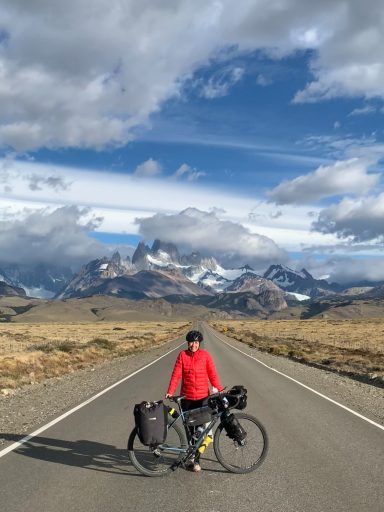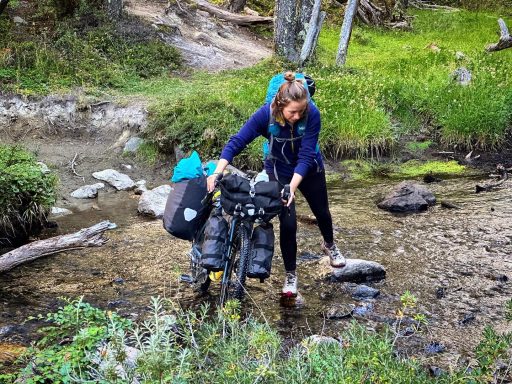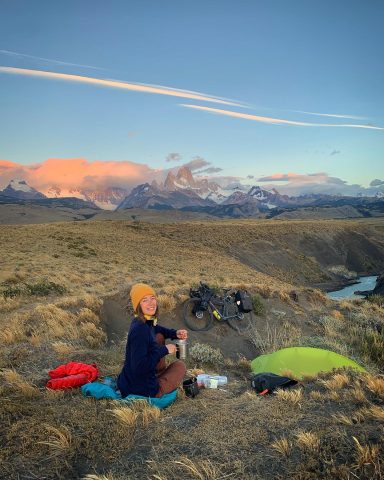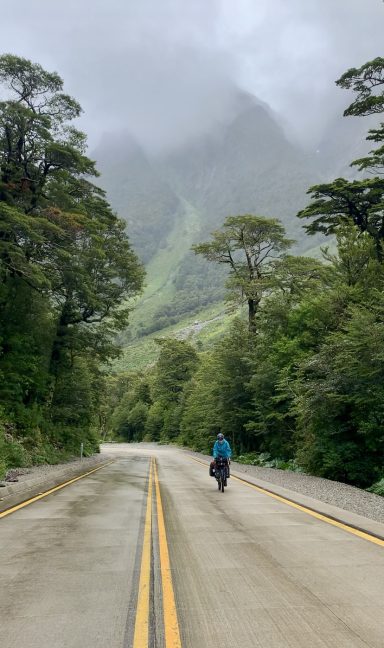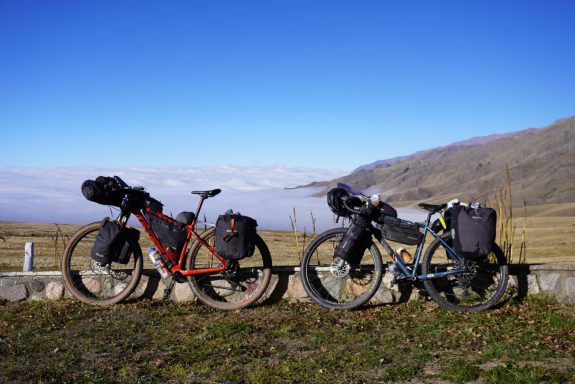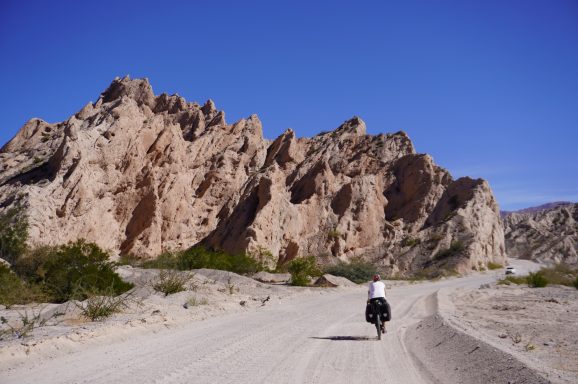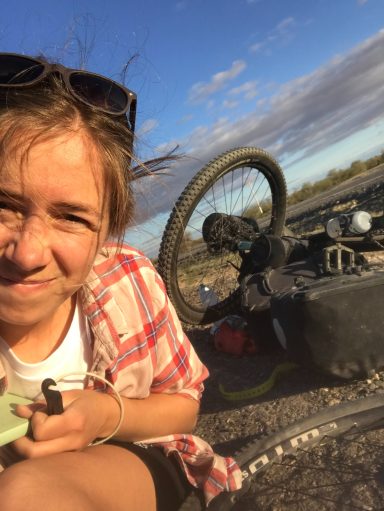
6 months of cycling across southamerica
I never thought I'd actually make it this far. I had no prior experiences in bikepacking, so seeing on the map how far we've made it is still a mystery to me! You'll find a few insights into the trip below :)
14
FEB
2024
bikepacking across south america... vamonos!
On february 14th our journey began with a one-way ticket to Patagonia, chile. the plan was simple: cycling north.
The idea was crossing the south american continent, trying to embrace nature and local culture, find epic wild camping spots, and of course ride some adventurous trails along the Andes.
We wanted to show the world what women are capable of - and inspire others to follow their dreams as well!
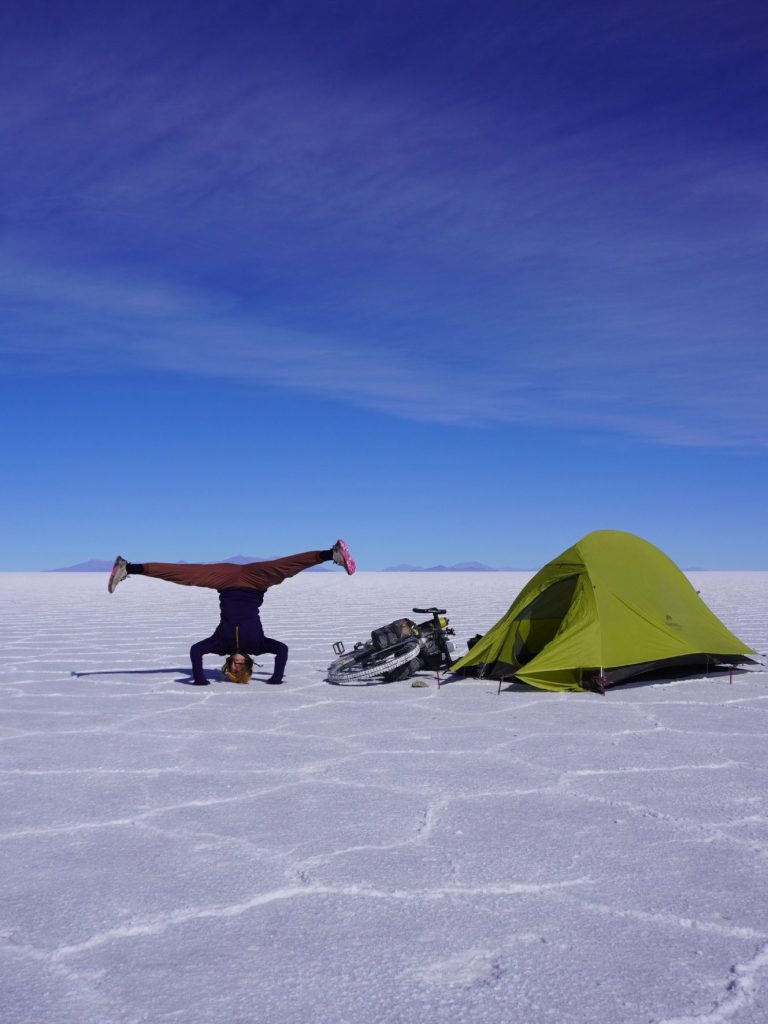
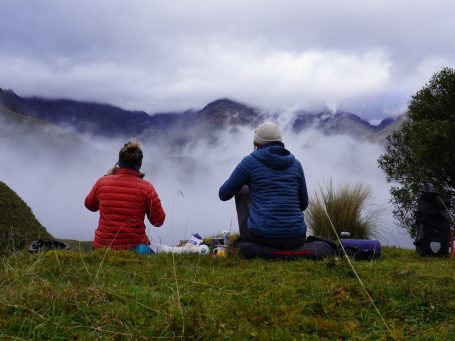


PATAGONIA
Feb '24 - May '24
Wow - how do I put three months of Bikepacking through the vast south of the Southamerican continent in a few paragraphs? This was my first ever Bikepacking trip and there is so much I have learned along the way. There would be hundreds of little stories to tell, but I tried to break down my Patagonian experience into two parts:
1. Surviving the first week on the bike - a little story
2. Logistics: food, weather, water, apps, etc.
1) The first week on the bike
Honestly, I don’t know how I survived. We started our trip in Chile, Puerto Natales, in mid-February. It was the end of Patagonian summer, the weather being unpredictable as usual in this region. Me, Luise and Blanka, my travel companions that luckily knew a lot more about Bikepacking than me, were all pretty overwhelmed with planning our first stretch of the trip… so at one point we just bought food for 4 days and started heading north on our bikes. We would cross through the famous Torres del Paine National Park and were sure that in the park itself or the latest in a village close to the border to Argentina we would find our next refuelling points.
Little did we know that we would be nowhere near an actual store within these 4 days.
Before our critical food situation though, I was confronted with several other obstacles. First of all, starting to cycle everyday for the whole day, without being used to it is really tough - mentally and physically. We had crazy headwinds that pushed us off the road several times on the first day and heavy rains on day 2 which eventually got through all my rain gear layers. In addition to that we rode on pure gravel roads with a loooot of altitude meters - and my body was not used to this. After an extensive hike with over 1000 altitude meters on day 3, my body went on strike. I had sore muscles in all parts of my body and was also starting to feel a bit feverish.
Due to our little remaining food supplies we decided to split up - Luise and Blanka headed straight through the mountains to Argentina with the remaining food, and I would try to find a ride to the town on the border. Fast forward - I had to cycle 40 k to exit the park, was exhausted to the bones, eventually found a ride to the border town where I set up camp at a bus stop because of lacking options for accommodation. By the time I was in my sleeping bag, I had a full on flu with a sore throat and fever.
I luckily found a nice couple in a van that gave me a ride to the next bigger town in Argentina (Calafate), where I would wait for Luise and Blanka. They had only been left with 1 day worth of food, but it would take them at least 2 days to cross the mountains… Of course they survived in the end and even though they now entered the country illegally as they hadn’t passed an official border station in the mountains, we were reunited and could continue together - with a bit more food for the next stretch ;-)
2) Logistics: food, weather, water, apps, etc.
After a few more weeks on the bike - it was now only Luise and me cycling - things started to get a lot more [routiniert]. After crossing back into Chile via Villa O’Higgins we were heading north on the Carretera Austral and later through the Lakes districts of northern Patagonia for the next month (or two?). Here’s our learnings from that time:
- Food: as we cycled through Patagonia in fall, the main season was already over and many little shops along the road were already closed. This was sad, because restocking on bread, veggies or anything basically (like a simple empanada) was really tricky from time to time. Especially in the south of the Carretera Austral, between Villa O’Higgins and Cochrane was practically nothing to get food from - we carried about 4-5 days worth of food in this region. We also tried to avoid eating out in restaurants as it is reeeeaally expensive in Patagonia… food culture in the south of Chile and Argentina in my opinion isn’t the most exciting anyways, so we didn’t feel like we were missing out on a lot by just eating pasta and bread every day.
- Water: that’s what I love a lot about Patagonia. There are clean rivers, lakes, and waterfalls to get water from almost everywhere. I don’t think there was a day that we didn’t pass a water source, so we carried max. 3 Liters per person per day. Usually less, as we’d camp somewhere on a water source anyways. We still filtered most of the water, just to be safe (we had a terrible food poisoning from a Quiche in El Chalten, so we didn’t want to jeopardise the health of our stomachs again)
- Hack to find drinking water: search for “drinking water “ on Organic Maps, and it’ll show water points on all downloaded maps!
- Weather: as mentioned above, we kind of misjudged the Patagonian fall. There is no such thing as ‘the end of summer’ down there as we had imagined romantically before our tip. There will be a lot of rain, a lot of cold and a lot of wind (mostly everything together) in the fall season. Winds are also mainly blowing from north to south, which makes going north really tough (a lot tougher than we had imagined in the beginning).
- Apps: Accommodation or wild camping: iOverlander, Warmshowers, Couchsurfing
- Weather: windy
- Maps: Komoot (planning routes), Organic maps (offline map, just a bit inaccurate with altitude meters when planning routes), google maps (also offline maps!)
NORTHERN ARGENTINA
May '24 - June '24
After 3 months of bikepacking I was slowly getting into the rhythm of bikepacking. That's a pretty long time to "get into the rhythm" you might think - but honestly, letting go of the "everyday-life"-rhythm from back home, such as the urge to be productive all the time or wanting to control and plan everything takes time. But it's a beautiful shift in ones mind once you're really slowing down. And letting the journey control you rather than wanting to control every step of the journey. I learned, I would only be disappointed if I tried to make all my plans happen all the time.
My first solo Bikepacking journey
From Los Andes, Chile, Luise and I decided to split up so everyone could follow their own ideas and routes for a while.
While Luise took on the challenge of crossing a crazy mountain pass, I hitchhiked that same crazy pass and began my solo bikepacking tour northwards. I realized, this was exactly what I needed to gain more confidence on my bike. Choosing my own routes, figuring out logistics, meal prep etc. all by myself (and yes, I did almost run out of water twice).
And of course: I was also confronted with my first mechanical issues. I was in the middle of nowhere, at the end of the day, with no decent option to set up camp. It was only a flat tire, but as I had never changed a flat before, it took me quite a while to figure this out. Not only did my tire lever break when I tried to remove the tire, but I also had a really hard getting the tire back on with the new tube (due to the tubeless rim on my wheel and no tire lever). In the end my valve also seemed to have a problem - so I gave up, put up my tent right next to the road, had a terrible night of sleep and tried to hitchhike back into town the next day. After hours of bad luck, a super nice Argentinian family dad - Alejandro - picked me up and brought me to the neighbors friend, that had a friend, whose cousin had a little "bike shop" (a room with a lot of tools and a bike stand).
Nevertheless they put so much effort into fixing my tire - it was heartwarming! By noon, half of the village was assembled around the little bikeshop, seemingly just by coincident. I think I made it into everyone's camera roll that day, and just when I thought I was about ready to hit the road again, people told me to wait as they wanted to get me a little present. So I received homemade jam, some self-dried raisins and cookies. I could see that everyone from this village was not particularily wealthy, but still they treated me like a lost daughter. Actually, to this day, a few people from this village still message me on Instagram to check how I'm doing. People are amazing.
The following days on my route north, I faced several flat tires, crazy headwinds, more unwanted roadside camps, but yet again extremely kind people. I had just survived a cycling day with my last water supplies when I entered a much needed village where I had to resupply. But everything seemed closed - like so many other places I've passed on my way. Traveling off-season definitely has it's downsides. After knocking on different doors, I found a little store that sold me some water and food. After many nights in rough conditions I was longing for a sheltered room with a bed, so I asked the shop-owner if anyone in the village owned a little 'hospedaje'. Nothing she knew of, but she then offered me to stay in their unfinished apartment across the street. I can't remember having a more relaxing night on this trip!
The next day I cycled across the Argentinian flatlands like a new person. So proud of myself for how well I managed all these challenges the past week, I felt incredibly... capable? Confident? Full of joy for sure!
Ruta 40 with Luise and Blanka
After quite some time apart, Luise and later on Blanka joined in again for a little bikepacking journey along the beautiful northern part of the Argentinian Ruta 40. Here, roads are very sandy, winds can be quite rough, but the landscapes... like from another planet!! And probably holds the best wildcamping spots we've had on the trip. See for yourself in the pictures!
©2023-2025 livingintents. Alle Rechte vorbehalten.
Wir benötigen Ihre Zustimmung zum Laden der Übersetzungen
Wir nutzen einen Drittanbieter-Service, um den Inhalt der Website zu übersetzen, der möglicherweise Daten über Ihre Aktivitäten sammelt. Bitte überprüfen Sie die Details in der Datenschutzerklärung und akzeptieren Sie den Dienst, um die Übersetzungen zu sehen.
